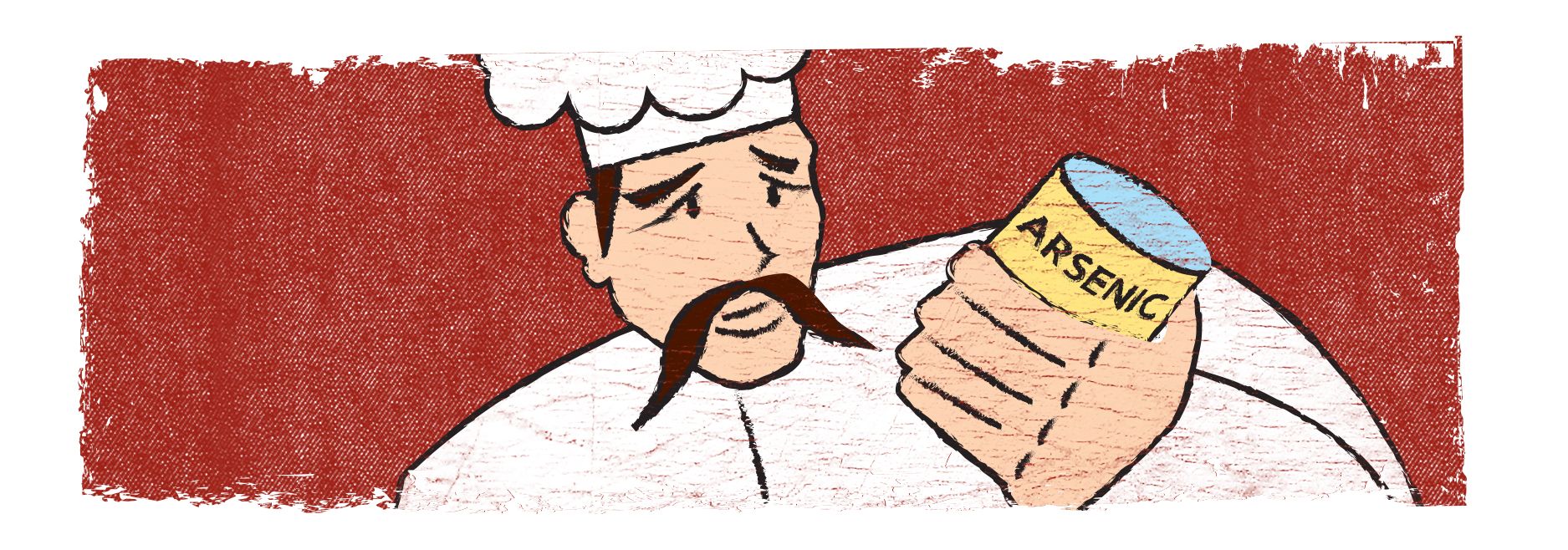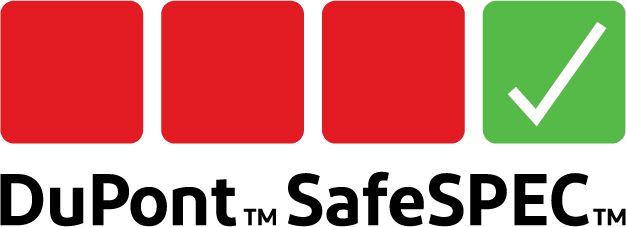Hand protection— sorting through the myriad requirements
Part 2 of 2 – Mechanical and thermal hazards
By Michael Sieber
Global Gloves Technical Specialist, DuPont Personal Protection
Note: This is a two-part article. To review part 1 on chemical hazards, see the Fall 2019 edition of The Glow Worm

Safety managers and associated decision makers have many things to consider when conducting risk or hazard assessments and selecting personal protective equipment (PPE) for their workforce. A major challenge is the fact that there are numerous PPE providers in the market, and not all PPE providers substantiate protection claims using the same standards or methods.
It is critical to identify the potential hazards of a given procedure, whether they are chemical and/or other types of hazards, such as mechanical (e.g., cut, puncture) or thermal (e.g., flame, contact, arc).
For gloves used in hazmat response, hazards could be present via chemical, mechanical, thermal and even electrical sources. Following identification of hazards, the next step is to determine which standards apply to the task. This often determines product selection and compatibility with other PPE.
In terms of glove requirements applicable to hazmat response, there is no single standards body from which to derive specifications. Depending on the glove, it may have European Norm (EN), American Society of Testing Materials (ASTM), American National Standards Institute/International Safety Equipment Association (ANSI/ISEA) and/or National Fire Protection Association (NFPA) markings or certifications. This makes it crucial for the user to be knowledgeable as to what the tests or certifications mean in order to select appropriate PPE. It should also be noted that although the tests cited in either EN, ANSI/ISEA or NFPA certifications often refer to ASTM and/or International Organization for Standardization (ISO) test methods—and even include some level of crossover—it is important to know that protection ratings or levels are not interchangeable and therefore should not be compared to one another.
Depending on functional requirements aand serviceable lifetime, having a durable glove may be more or less critical for one’s tasks. Will the glove be worn once? Which hazards could the glove be exposed to during use? Is it worn until contaminated? Does it need to be laundered (e.g., wet or dry decontamination, machine or hand washed, etc.)? Several durability and protection modes are outlined below:
Abrasion resistance: Having abrasion resistance allows gloves to withstand the ability to rub or abrade against a surface. Typically, gloves will either reference EN 388 or ANSI/ISEA 105 for abrasion resistance and will have different markings according to the level of protection they provide.
Cut and puncture resistance: Having cut and puncture resistance is critical for many gloves used in construction, manufacturing and industrial settings, as well as clandestine lab response. Gloves having cut or puncture resistance will maintain protection against sharp metal, needle stick or similar hazards and should be a consideration for hazmat response where applicable. Typically, gloves will either reference ANSI/ISEA 105 ratings for cut and puncture resistance (including hypodermic needle puncture) or EN 388 ratings
Impact protection: Some hazmat response applications may require padding or impact resistance to protect the hand, such as when heavy or sharp objects are involved. ANSI/ISEA 138 has been developed to rate gloves based upon their impact protection level. The European mechanical glove standard, EN 388, provides a pass/fail impact assessment for the knuckles but excludes finger protection.
Flame or fire resistance: Responding to a hazmat call may involve the potential for flash fire, handling hot objects or other thermal hazards. The two primary bodies that cover hand protection hazards applicable to these tasks are ANSI/ISEA 105 and EN 407. Applicable tests within ANSI/ISEA 105 include ignition resistance and burning behavior (or after flame time); heat degradation or convective heat resistance; and conductive or contact heat resistance. EN 407 also rates similar failure modes versus thermal exposure, in addition to radiant heat resistance and resistance to exposure of small and large splashes of molten metal.
It is important to note that if major or sustained fire threats exist, gloves designed primarily for fire resistance, such as those that are compliant with NFPA 1971, should be used. Likewise, for major arc flash hazards, PPE appropriate for arc flash resistance should be worn. Specific PPE such as arc-rated gloves (NFPA 70e, citing ASTM F2675) or rubber insulating gloves designed to meet ASTM D120 should be worn if such hazards are present.
Electrostatic discharge: EN 1149-5:2008 covers antistatic and electrostatic dissipative (or antistatic) behavior of PPE. Some chemical protective gloves used in hazmat response will cite this method, so it is good to know whether they will protect against the hazard that your organization faces. It is important to note that if major electrical hazards are present, PPE appropriate for flame resistance and/or arc flash resistance should be worn (refer to previous paragraph).
Hazmat response can involve a variety of applications, including some whose hazards are not realized until the responder enters the hot zone having PPE already donned. Therefore, it is crucial to prepare for the most critical potential hazards and to provide adequate hand protection for the task.
For more information about the DuPont hand protection portfolio and which glove solution meets your needs, visit safespec.dupont.com.
Need to protect your SCBA and your budget? Consider a Level B encapsulated suit.
By Daniel Bowen
Technical Specialist, DuPont Personal Protection
Catherine Brear
End Use Marketing Manager, DuPont Personal Protection

Properly protecting your self-contained breathing apparatus (SCBA) equipment is critical during response scenarios. Not only are SCBAs essential equipment to get the job done safely, they are expensive, often costing between $5,000 and $7,000 each.
Many departments use a fully encapsulated Level A suit during some scenarios to protect the responder’s SCBA equipment. After all, encapsulating garments are designed to completely cover the wearer, including all respiratory equipment (except external air supply lines, if applicable). The suit is then discarded after the incident. This can get expensive quickly, especially when you consider that typically two or more suits are directly involved in a response.
If your main concern is ensuring the integrity of your SCBA equipment, you may be able to consider using a lower cost encapsulated Level B suit instead of a Level A suit. This could result in significant cost savings for your department while still maintaining the integrity of your SCBA equipment and protecting the individual. Of course, your selection of personal protective equipment (PPE), and decision of whether you need a Level A or Level B ensemble, should tie directly to your hazard assessment, the chemicals you may be encountering and the activity you are completing.
What is the difference between an encapsulated Level A and an encapsulated Level B suit? Per guidelines from the U.S. Environmental Protection Agency (EPA) and the Occupational Safety and Health Administration (OSHA), encapsulating garments that pass the inflation test described in ASTM F1052, Standard Test Method for Pressure Testing Vapor Protective Ensembles, are considered Level A. Encapsulating garments that are not designed to pass ASTM F1052 are considered Level B. In short, Level A encapsulated suits are vapor-tight, whereas Level B encapsulated suits are not.
Always conduct a hazard assessment to ensure you are using the proper PPE. Your hazard assessment will help determine whether a Level B encapsulated suit may be a viable option for your response scenario.
Will a certified suit be the best match for my hazard?
By Susan Lovasic (ret.)
Global Regulatory Affairs Manager, DuPont Personal Protection

In the United States, general industry employers have regulatory responsibility for selecting personal protective equipment (PPE) under Occupational Safety and Health Administration (OSHA) 29 CFR 1910.132. Employer assessment of workplace hazards drives the selection of appropriate PPE. Only respiratory protection is required to be approved by a government agency in the United States—specifically by the National Institute for Occupational Safety and Health (NIOSH); however, other types of PPE available for consideration and selection may be third-party certified.
A common question during the chemical protective clothing (CPC) selection process is, "Will a certified suit be the best match for my hazard?" The answer to this question is, "It depends on the specific standard and your specific hazard scenario." Each CPC standard has strengths and limitations to consider when determining whether a certified garment would match the protection level needed.
A strength of certified CPC is that performance requirements were developed using a consensus process. Additionally, when the CPC is third-party certified, the certifying agency provides oversight to the CPC manufacturer. There are, however, some limitations for CPC performance standards that should be considered.
First, every standard has a very specific scope for how the CPC is evaluated and its intended use. Care must be taken to understand the level of protection the suit is designed to provide. Additionally, standards use a specific limited battery of hazardous chemicals to test the suit material and components. This raises an important question: “Is a third-party certified garment the best choice if it was not tested against the chemical hazards identified in your hazard assessment?”
Unless certification of CPC is required by your employer or government regulation, whether CPC is certified should not be the only question you ask. Rather, you should start with the hazard assessment and find CPC that will protect against your specific hazards. Ideally, the CPC that meets your hazard protection needs will also be third-party certified. In that case, the certification of the CPC will add extra value to protecting your workers.
Note: This is an excerpt from an article written by Susan Lovasic (ret.) for Occupational Health & Safety (OH&S) Magazine. If you’d like to learn more regarding CPC selection and National Fire Protection Association (NFPA) hazmat standards, the full version of this article, titled “Chemical Protective Clothing: Navigating Standards to Match Your Hazards,” originally appeared in the July/August 2019 issue of OH&S Magazine.
Hazmat through history – arsenic
By Daniel Hammel
Marketing Consultant, DuPont Personal Protection

Famous for its ability to lethally poison insects, vermin and humans, arsenic is a crystalline metalloid that is usually found in mineral compounds rather than in its pure form. Arsenic was first identified in the 13th century; however, arsenic compounds were mined long before then by early civilizations in Europe, Africa and Asia.
Like many other examples of hazardous materials, arsenic has some useful applications and may even be an essential trace element for various birds and mammals. Over the years, it has been used to make pesticides, medicines, alloys, coloring agents and even beauty supplies.
For humans, long-term exposure to unsafe levels of arsenic is most often due to contaminated drinking water. Contaminated groundwater usually occurs naturally; however, it may also be caused by human activity, such as farming and mining. Globally, more than 200 million people are exposed to contaminated drinking water with unsafe levels of arsenic. Consuming small amounts of arsenic over a long period can lead to serious illness or death. If a large amount is consumed, arsenic poisoning can kill a person quickly.
While uncommon, arsenic poisoning has occurred in some surprising ways that have resulted in legislation to better protect people. For example, in England during the 1850s, the demand for sugar far surpassed the market’s ability to supply it. This made the price of sugar very high. To make matters worse, the British government, recognizing the value of sugar, applied a heavy tax to it. Only the very wealthy could afford significant quantities of sugar. For the working class, a mixture called “daft,” which was made of powdered limestone and plaster of Paris, was mixed with sugar to make it more economical. Although inferior in taste, daft was harmless to eat.
In 1858, a market seller in the city of Bradford who was nicknamed Humbug Billy sold candies called “humbugs” that were supplied by a local druggist. Due to improper labeling, the druggist used 12 pounds of arsenic trioxide instead of daft to make 40 pounds of humbugs. Each candy contained enough arsenic to kill two people.
Within a day or two, the candies were sold to hundreds of people, resulting in 21 deaths and another 200 people becoming seriously ill. These totals could have been much worse. If all the candies had been sold and eaten, an estimated 2,000 people could have died. This tragedy led to new legislation in Britain regarding the proper labeling and recordkeeping of poisons.
To learn more about suitable protection against hazardous particles, visit safespec.dupont.com.
Products and/or sales questions?
Share your stories, tips and tricks.

Resource library
Find technical information, videos, webinars and case studies about DuPont PPE here.


